'Increasing angles of water and earth.'
From Reykjavik to Wivenhoe
Thorunn Björnsdottir Bacon
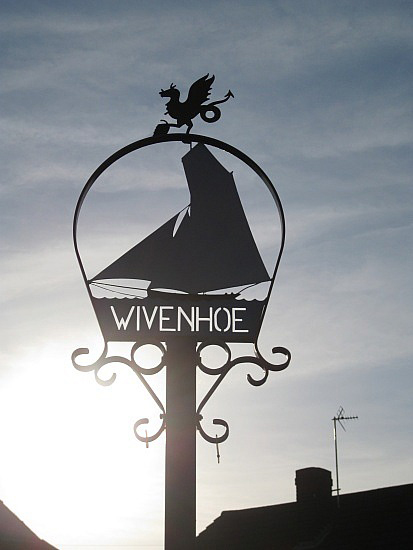
The sky was dark overhead and heavy clouds threatened rain as me and my new love stepped off the train at the little station at Wivenhoe. I had hoped for a sunny day, as for me England was the country of endless summers, something that my new English friends found very amusing and my Icelandic family thought laughable. Whenever I returned home during college holidays, people smugly asked about the 'English weather', perversely ignoring the fact that even at the height of summer the temperature in Iceland rarely rises above fourteen degrees Celsius. But this day was as grey as they come.
I looked forward to visiting Wivenhoe, and later on I realised that it was because I hoped I might belong there.
My stomach fluttered as we squeezed through a small gate onto Station Road but immediately, my heart sank. Facing us was something that could only be described as boarded up wasteland, guarded by menacing black iron gates, chained shut by a huge padlock. A desolate wilderness of concreted earth seemed to reach as far as the eye could see.
'What on earth is this?' I asked.
'This was the 'upstream' shipyard,' he replied. I thought about it for a moment and decided that I could handle ports and shipyards, even abandoned ones. I grew up only a stones throw from Reykjavik's container-ship port, so ships and ports were a part of the landscape of my mind. Perhaps this was a sign?
He squeezed my hand reassuringly as we walked along the tall rusty fence towards the river. The grey sky covered the town like a tightly fitting lid, draining the colour from the river, leaving it steel grey. The water was high and he explained that the river Colne was a tidal river.
'Just beyond there is the sea.' He pointed towards the grey horizon.
I looked and only saw green fields, but I believed him. This was good, I thought; this was very good.
The perimeter fence of the old shipyard went on, shielding a desolate landscape and we didn’t know that that one day, many years later, this vast area would be covered by a housing development, and even more impossible to imagine was that one day we would make our home in one of those houses.
'They built big ship in the dry dock,' his hand was holding mine and he lifted both our hands to gesture beyond the fence, 'the most famous one was the Cap Pilar.'
None of this meant anything to me until much later, when a so called 'dry dock' became the centre feature of the new development; a shallow boat-shaped lake which serves as a receptacle for leaves and rubbish. It was constructed on the site of the original 'dry dock' but all there remains is a fancy granite podium inscribed in gold commemorating the ship building that took place on the site, but strangely, there is no mention of 'Cap Pilar'.
Cap Pilar was a 295 ton, three masted yacht, famous for having sailed around the world in the years between 1936 and 1938. Eventually she ended up here, but when the shipyard closed in 1961 and the site was adapted into a port, the authorities decided they had no need for a dry dock and wanted it filled in. The dilapidated Cap Pilar was in the way, and it was decided that she should be broken up by the use of explosives. Her destruction proved more difficult than anticipated, and eventually her remains were buried in a concrete tomb which still lies underneath the 'dry dock.'
As we passed, I wondered if she had ever visited Iceland, if she had docked next to hard working rusty trawlers in the Reykjavik harbour and if crowds had flocked to view this splendid boat that had travelled all the way from Wivenhoe in England.
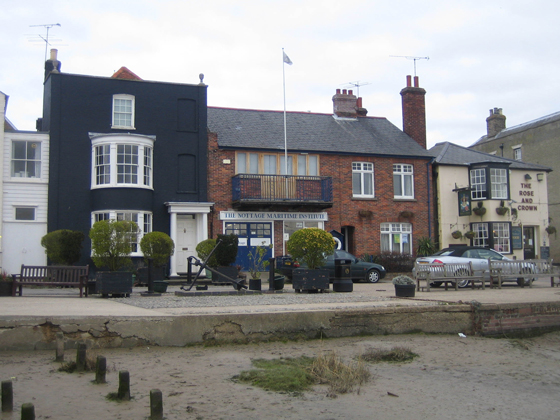
The fence ended and we came upon a row of pretty pastel coloured cottages with equally colourful names; Quayside Cottage, Maple Cottage, Trinity House and Anchor House, all prettier than the next, like girls trying to outdo each other at a beauty pageant. On we walked and the buildings became taller and sterner.
'Sail-lofts', my love said, 'sail-lofts and grain stores, and of course, The Rose and Crown.'
The Storehouse, the Nottage, Quay House and the Granary stood tall and imposing like backdrop of a stage production.
Suddenly we came to another fence and my heart sank a little. What kind of a place was this?
'This is the other shipyard, Cook's shipyard; the 'downstream shipyard',' he explained. This time some of the buildings remained. Signpost pointed to washrooms and placards told that smoking was forbidden and that drivers should sign in with the foreman. We held hands and ran laughing through the derelict buildings, hoping that the whole shebang wouldn't come crashing down over our heads.
I enjoyed living in England, but my genetic make-up had a problem with living in such a flat and tranquil landscape. It was only the Colne that kept me sane, as she continually moves back and forth; swelling and receding according to the moon and the stars, and every hour the water changes colour as the tide changes direction.
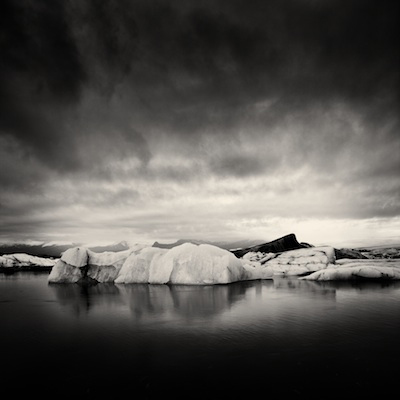
The landscape along the river and around Wivenhoe is almost too pretty, with its magical woods and gentle rolling slopes. Icebergs do not rip bridges away from their foundations as they travel from the glacier down to the estuary. Colossal boulders do not tumble down steep mountain slopes, blocking roads so entire communities are cut of from the rest of the world for days. In Wivenhoe there are no snow-capped mountains, no rushing waterfalls, no volcanoes and no earthquakes. Or so I thought.
Many years later, as we walked that same route along the river, my love that was now my husband pointed at the pretty Anchor House, and casually remarked as if it was of no particular significance; 'Apparently the roof fell off during the earthquake.' As he said it, I knew that this was it; this was the connection that I had been looking for. The possibility that this landscape had hidden dramas; that the village really wasn't as tame as it looked, and underneath the picture postcard quayside lay a coiled serpent; my Midgard serpent, a monstrous force that could any moment stir and rip the earth open.
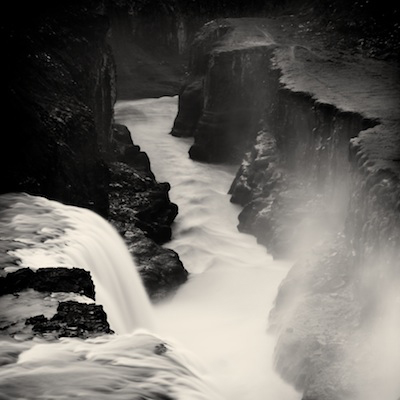
The largest earthquake that I have experienced took place when I was around nine years old and had to accompany my father to where he was giving a seminar. The hall was partitioned in half, and I skipped up and down the empty part, waiting for dad to finish. Suddenly there was a loud but strangely low-pitched rumbling noise like a lorry shedding a load of gravel, and before I could run for cover under a table or in a doorway as we had been trained to do, the parquet floor at the furthest end of the hall lifted and proceeded to roll in waves until it reached me and I had to jump up to let the wave pass under my feet. The floor continued to move and I fell down on my knees and covered my head as I feared that the ceiling would come crashing down. Then, as suddenly as it had begun it stopped but the quiet after an earthquake is deafening as everyone holds their breath and waits.
An earthquake hit Wivenhoe at 9:18 am on Tuesday 22nd of April 1884. This was the strongest quake ever experienced in England in recorded time, estimated at anything between 4.5 and 6.0 on Richter scale, and Wivenhoe has the little known claim to fame of being the most earthquake damaged town in England.
The earthquake was unexpected as of course there were no seismic monitors in 1884, but immediately afterwards people tried to point to strange events that could have served as a premonition and a warning, if anyone had taken note.
Farmers spoke of having noticed their livestock lying down immediately before the quake struck and there were reports of strange weather phenomena in the preceding days.
The only printed prediction that appeared was in the astrology column of 'The London Daily Echo' during the first week of April. It said that during April 'there would be an upheaval in Eastern England of a kind not before experienced.'
In 2003, the astrologer Ruth Baker, set a chart for 9.18 GMT on the 22nd of April 1884, and she notes: '...the signs on the angles are of earth and water. The Moon in the 10th house occupies the sign of Pisces. As the gaping fissures in the ground widened, huge waves engulfed tiny river boats causing fishermen and sailors to fall headlong into the churning water.'
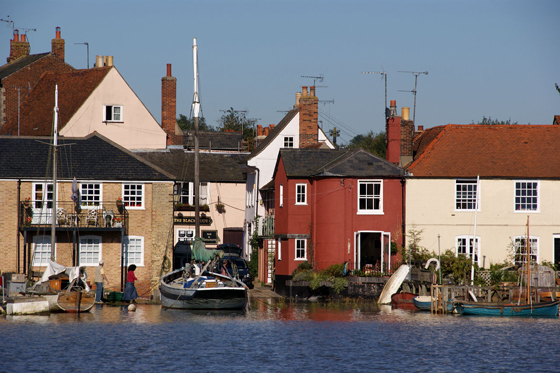
Regardless of what one thinks of Astrology, it emphasises the notion that man is not really in control of anything; the moon and the stars influence the sea, and the sea influences the earth, but at the end of the day, the earth governs it self.
Not one building along the quay was left untouched by the quake, but the ones most damaged were the row of pretty cottages and the Anchor Pub. One of the eyewitness accounts given was that of Lord Alfred Paget who had just boarded his yacht, the impressive steam yacht Santa Cecilia, for inspection as she had just returned from an Atlantic crossing.
He tells: 'As I looked towards the village there was this terrible loud rumbling noise. Immediately the vessel began to shake and the people around me fell like ninepins.' He continued to describe how the entire village seemed to rise up, the roofs moving like they were the waves of the sea. Then, one after the other, chimneystacks toppled over, crashing on to the roofs, and slates rained on the streets below.
A huge wave swept across the Colne, throwing men on to decks and forcing others to grab masts for dear life. Lord Paget was thrown and as he lay on the deck, he observed: 'And as I fell I saw part of the church steeple, which towers over the village, sway and then topple into the mass of the devastation.' The earthquake lasted no more than five or six seconds and although the devastation was immense, miraculously, no lives were lost either in Wivenhoe or elsewhere, although one person was said to have died from 'shock'.
Reports from the time state that nearly every single building in Wivenhoe was damaged in some way. That might have been an exaggeration, but there was certainly a lot of minor damage such as missing roof tiles and fallen bricks. The community rallied around to help those whose houses had been damaged and in a relatively short time most buildings had been repaired. A suggestion was made from a Dr Wallace of Colchester, that a few buildings should be left un-repaired for the next three months, to give visitors better idea of the destruction. Tourists had flocked to Colchester and Wivenhoe to see the damage, and Dr Wallace felt that they could be charged for viewing the buildings and thus contributing to a repair fund. His idea went unsupported and it was like so often the case, that people caught up in historic events do not realise the enormity of what has happened. So it is that nothing remains of this momentous natural event apart from a few photographs.
That first day when I stepped of the train, my life had already been ordered. The clouds lifted and the river came to life and I decided that this was the place for me.
Much of what I saw that day is gone. Both the shipyards are gone, their ground covered by houses, but delightfully, the buildings on the Quay that were damaged in the earthquake still stand proud.
Many things change whilst others remain, and even if they only remain in our mind, they form connections that allow us to feel that we belong.
Ripples on water
Movement in soil
River rising
Earth rising
Water falling
Increasing angles
Of earth and water
References
Haining, Peter, The Great English Earthquake. Hale, London 1976
Kay, Peter, Wivenhoe and the Earthquake. Peter Kay, Wivenoe, 2005
Mendola, Raphael and White, William, Report on the East Anglian Earthquake of April 22nd 1884. Macmillan & Co and The Essex Field Club, London 1885
About the Article
Increasing Angles of Earth and Water
I wrote this piece for Marina Warner's Memory Map course. The search for a sense of belonging is a recurrent theme in my writing, and writing this piece was an opportunity to explore those feelings and longings. Adjusting to living in a different country from the one of your birth can be challenging, and I thinks it's a part of being human to look for signs and threads that we can grab hold of to allow us feel a sense of connection.
About the author
Thorunn Björnsdottir Bacon
Since graduating from the MA in Creative Writing at Essex in 2009, I've predominantly concentrated on novel writing. I have written two novels that will never see the light of day but were important for me to write as through that process I learned about the craft of writing and got a better sense of what kind of a writer I am. I'm now finalising a darkly erotic novel set in Victorian London called 'Show me more' in which one of the main character is Icelandic. I've been fortunate this year to be taken on the Romantic Novelist's Association's New Writer's Scheme, which is very helpful in terms of support and mentoring. I use every opportunity to learn more about the craft of novel writing, but the main thing is just keep writing.
Links
Thorunn Björnsdottir Bacon
my writing room - Thorunn Björnsdottir Bacon's blog


